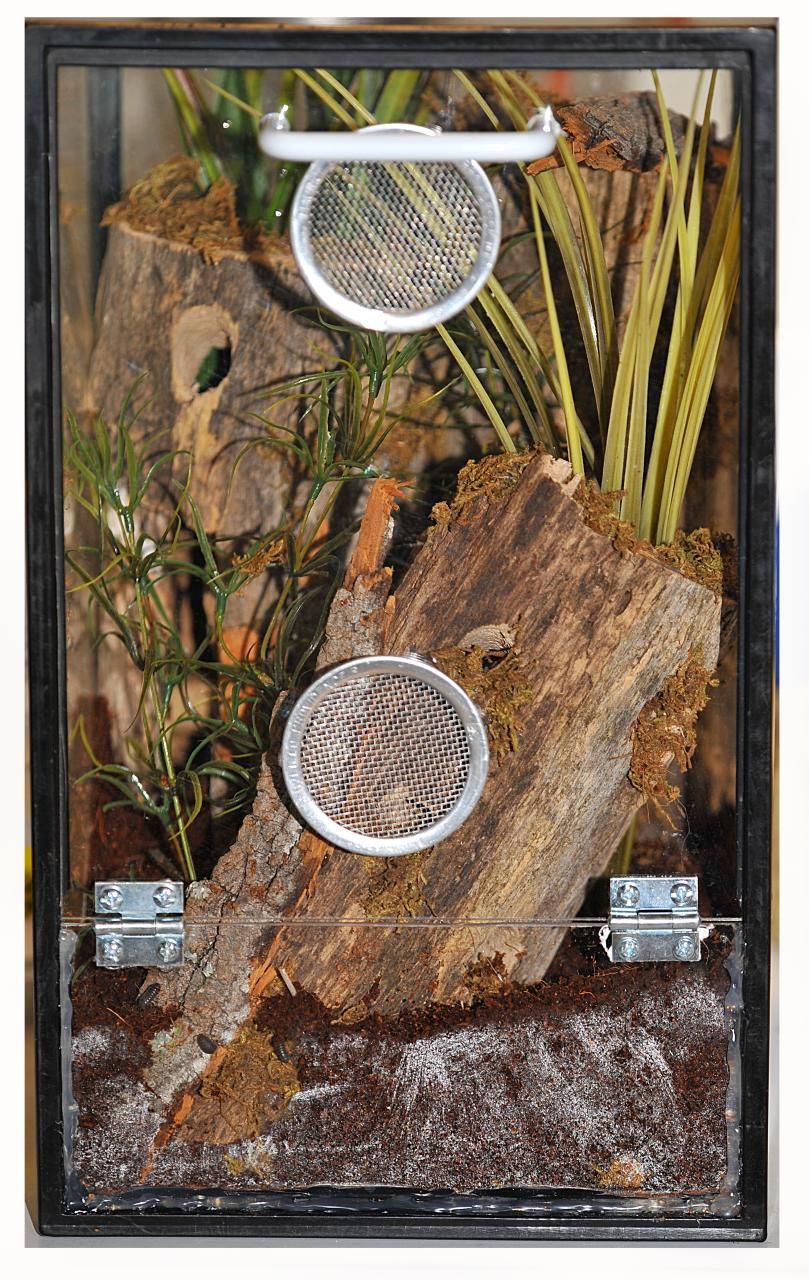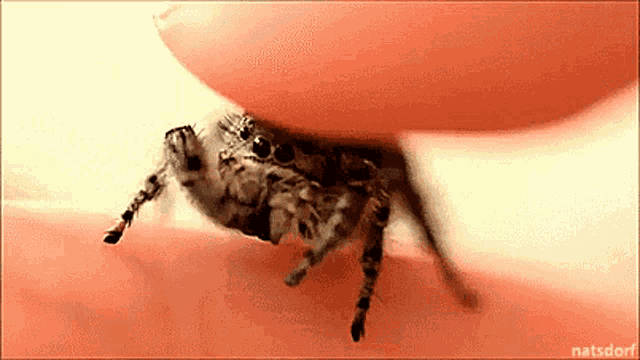Habitat
Create a safe environment. Jumping spiders can thrive in a variety of environments. In order to make sure they have room to jump, try to choose a container that is at least a cubic foot in size. Glass or plastic terrariums work well. The enclosure should have good ventilation to prevent stagnated air and mould growth. Ventilation holes should be small enough for the spider not to be able to take advantage of them and escape. On the other hand, holes have to be big enough to allow airflow. Jumping spiders don't spin webs, but they do enjoy resting in little nests. Make sure to add some decorations for the spider to explore. For example, a few sticks or pieces of cork bark with some fake plants should be enough to provide the spider with a variety of terrains to climb on. Use materials non-susceptible to mould. As a substrate, potting soil should work perfectly. Keep the cage out of direct sunlight. You don't want your spider to overheat.

More tips on how to make a perfect habitat for your Spider!
| Product | Cost |
|---|---|
| Your Jumping Spider | €0 - €30 |
| Enclosure | €0 - €30 |
| Substrate | €5 - €30 |
| Decorative | €10 - 20€ |
| Accessories | €10 - €30 |
| Food | €50 - €100 yearly (pet shop food) |
